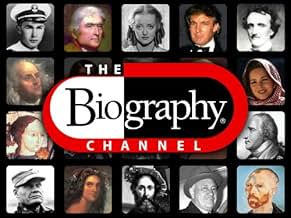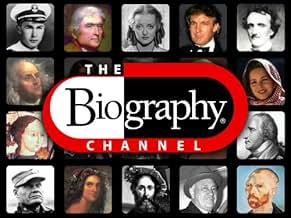Vincent van Gogh(1853-1890)
- Writer
- Art Department
- Actor
Vincent Willem van Gogh was born on March 30, 1853, in Zundert,
Netherlands. His father, named Theodorus van Gogh, was a Protestant
minister. His mother, named Anna Cornelia Carbentus, was a daughter of
the "book-binder to the King" Willem Carbentus; who had bound the first
Consitution of Holland. Vincent Van Gogh was given the name of his
elder brother, who had died at birth a year before Van Gogh was born.
He had two junior brothers and three sisters, and was strongly attached
to his brother Theo.
Young Van Gogh was brought up in a religious and strict atmosphere. He was severely punished by his grandmother at one time. He had a very uncontrollable temper, was highly emotional, and lacked self-confidence. From the age of 7 to 11 he was taught at home by a governess. Then from the age of 11 to 15 he was sent to boarding schools in the Netherlands. His first art teacher was Constantijn Huysmans, a professional artist, who taught the young Van Gogh basic drawing and composition. From 1869-1873 Van Gogh worked for an established art dealer, Goupil & Cie, in the Hague. Then he worked in London and Paris until 1876, when he was fired for showing resentment to the customers. Van Gogh went to England as a minister's assistant. Then he studied theology at the University of Amsterdam for one year, but gave up. He tried to follow his father's profession and become a preacher in Belgium, but was dismissed after a year for "underminig the dignity of the priesthood."
He studied at the Royal Academy of Art in Brussels for six months in 1880 and 1881. In the summer of 1881 Van Gogh fell in love with his widowed cousin, Kee Vos, but was cruelly rejected by her. He became upset and resentful. This led to a violent quarrel with his father on Christmas, and he moved in with an alcoholic prostitute for a year. In 1884 Van Gogh had a romance with a neighbor's daughter, who shared his interest in art, but their marriage was opposed by both families. This and the death of his father in March of 1885 caused depression. At that time Van Gogh made his first major work, "The Potato Eaters". In September of 1885 he was accused of making one of his sitters, a young peasant girl, pregnant and was ostracized by the local Church. He moved to Antwerp, where he studied color theory and painting at the Antwerpen School of Arts, and matriculated in January of 1886. While he was away, his mother and sister moved. They left behind almost all of his paintings, of which 70 were bought by a junk dealer and some were burned.
From March 1886 to February 1888, Van Gogh lived in Paris. There he met the Impressionists: Claude Monet, Pierre-Auguste Renoir, Edgar Degas, Alfred Sisley, Paul Signac, Georges Seurat, and brothers Lucien and Camille Pissarro. The Impressionist's use of light and color inspired Van Gogh on updating his own palette. During the Paris years, his color scheme became brighter and lighter. His use of complementary colors in proximity produced remarkable decorative effects. He wrote: "I want to use colours that complement each other, that cause each other to shine brilliantly, that complete each other like a man and a woman." Van Gogh also adopted some ideas of pointillism, but developed his own technique with stronger brush-strokes, sharp composition, and his own color scheme using complementary colors. He created about 200 oil paintings during his two years in Paris.
In February of 1888 Van Gogh moved to Arles with a plan to found an art colony. His friend Paul Gauguin joined in October. Van Gogh presented him several paintings of sunflowers, but their cooperation lasted only for two months. Their arguments about art and life were exacerbated by drinking and rivalry for prostitutes. Van Gogh's mental state was alternating between fits of depression and lucidity. At times, his madness led to aggressive actions. In December of 1888 he attacked Paul Gauguin with an open razor, was stopped, but eventually cut part of his ear off and gave it to a prostitute. Paul Gauguin sent a note to his brother Theo and left forever. Theo immediately came to help. Van Gogh was sent to the state mental hospital of St. Paul in Saint Remy de Provence. There he lived for a year and made some of his best works: "Starry Night", "Vincent's Bedroom", and several paintings of Irises.
Van Gogh was released in May of 1890 and moved to live in Auvers-sur-Oise under supervision of Dr. Gachet. His health improved enough to give him energy for the most intensive work marathon. In just two months there he painted ninety excellent works. This included portraits of Dr. Gachet, landscapes, still-lives, and "Wheat Field with Crows". In a state of depression he went out into the wheat field and shot himself in the chest on July 27, 1890. Fatally wounded, Van Gogh died two days later in the arms of his brother Theo. He was laid to rest at the cemetery of Auvers-sur-Oise.
Van Gogh's disobedience drove his creativity towards new horizons. Although categorized as a Post-impressionist, Van Gogh pioneered the style of Expressionism and had a very important influence on 20th century art. He influenced many artists and art movements, such as Henri Matisse and the French Fauves, Ernest Ludwig Kirchner and German Expressionists, as well as Francis Bacon and other artists. Van Gogh was been the topic of several biographical films. He was played most memorably by Kirk Douglas in Lust for Life (1956) and by Tim Roth in Vincent & Theo (1990). The highly popular song "Vincent" by Don McLean was a tribute to Van Gogh.
Young Van Gogh was brought up in a religious and strict atmosphere. He was severely punished by his grandmother at one time. He had a very uncontrollable temper, was highly emotional, and lacked self-confidence. From the age of 7 to 11 he was taught at home by a governess. Then from the age of 11 to 15 he was sent to boarding schools in the Netherlands. His first art teacher was Constantijn Huysmans, a professional artist, who taught the young Van Gogh basic drawing and composition. From 1869-1873 Van Gogh worked for an established art dealer, Goupil & Cie, in the Hague. Then he worked in London and Paris until 1876, when he was fired for showing resentment to the customers. Van Gogh went to England as a minister's assistant. Then he studied theology at the University of Amsterdam for one year, but gave up. He tried to follow his father's profession and become a preacher in Belgium, but was dismissed after a year for "underminig the dignity of the priesthood."
He studied at the Royal Academy of Art in Brussels for six months in 1880 and 1881. In the summer of 1881 Van Gogh fell in love with his widowed cousin, Kee Vos, but was cruelly rejected by her. He became upset and resentful. This led to a violent quarrel with his father on Christmas, and he moved in with an alcoholic prostitute for a year. In 1884 Van Gogh had a romance with a neighbor's daughter, who shared his interest in art, but their marriage was opposed by both families. This and the death of his father in March of 1885 caused depression. At that time Van Gogh made his first major work, "The Potato Eaters". In September of 1885 he was accused of making one of his sitters, a young peasant girl, pregnant and was ostracized by the local Church. He moved to Antwerp, where he studied color theory and painting at the Antwerpen School of Arts, and matriculated in January of 1886. While he was away, his mother and sister moved. They left behind almost all of his paintings, of which 70 were bought by a junk dealer and some were burned.
From March 1886 to February 1888, Van Gogh lived in Paris. There he met the Impressionists: Claude Monet, Pierre-Auguste Renoir, Edgar Degas, Alfred Sisley, Paul Signac, Georges Seurat, and brothers Lucien and Camille Pissarro. The Impressionist's use of light and color inspired Van Gogh on updating his own palette. During the Paris years, his color scheme became brighter and lighter. His use of complementary colors in proximity produced remarkable decorative effects. He wrote: "I want to use colours that complement each other, that cause each other to shine brilliantly, that complete each other like a man and a woman." Van Gogh also adopted some ideas of pointillism, but developed his own technique with stronger brush-strokes, sharp composition, and his own color scheme using complementary colors. He created about 200 oil paintings during his two years in Paris.
In February of 1888 Van Gogh moved to Arles with a plan to found an art colony. His friend Paul Gauguin joined in October. Van Gogh presented him several paintings of sunflowers, but their cooperation lasted only for two months. Their arguments about art and life were exacerbated by drinking and rivalry for prostitutes. Van Gogh's mental state was alternating between fits of depression and lucidity. At times, his madness led to aggressive actions. In December of 1888 he attacked Paul Gauguin with an open razor, was stopped, but eventually cut part of his ear off and gave it to a prostitute. Paul Gauguin sent a note to his brother Theo and left forever. Theo immediately came to help. Van Gogh was sent to the state mental hospital of St. Paul in Saint Remy de Provence. There he lived for a year and made some of his best works: "Starry Night", "Vincent's Bedroom", and several paintings of Irises.
Van Gogh was released in May of 1890 and moved to live in Auvers-sur-Oise under supervision of Dr. Gachet. His health improved enough to give him energy for the most intensive work marathon. In just two months there he painted ninety excellent works. This included portraits of Dr. Gachet, landscapes, still-lives, and "Wheat Field with Crows". In a state of depression he went out into the wheat field and shot himself in the chest on July 27, 1890. Fatally wounded, Van Gogh died two days later in the arms of his brother Theo. He was laid to rest at the cemetery of Auvers-sur-Oise.
Van Gogh's disobedience drove his creativity towards new horizons. Although categorized as a Post-impressionist, Van Gogh pioneered the style of Expressionism and had a very important influence on 20th century art. He influenced many artists and art movements, such as Henri Matisse and the French Fauves, Ernest Ludwig Kirchner and German Expressionists, as well as Francis Bacon and other artists. Van Gogh was been the topic of several biographical films. He was played most memorably by Kirk Douglas in Lust for Life (1956) and by Tim Roth in Vincent & Theo (1990). The highly popular song "Vincent" by Don McLean was a tribute to Van Gogh.















